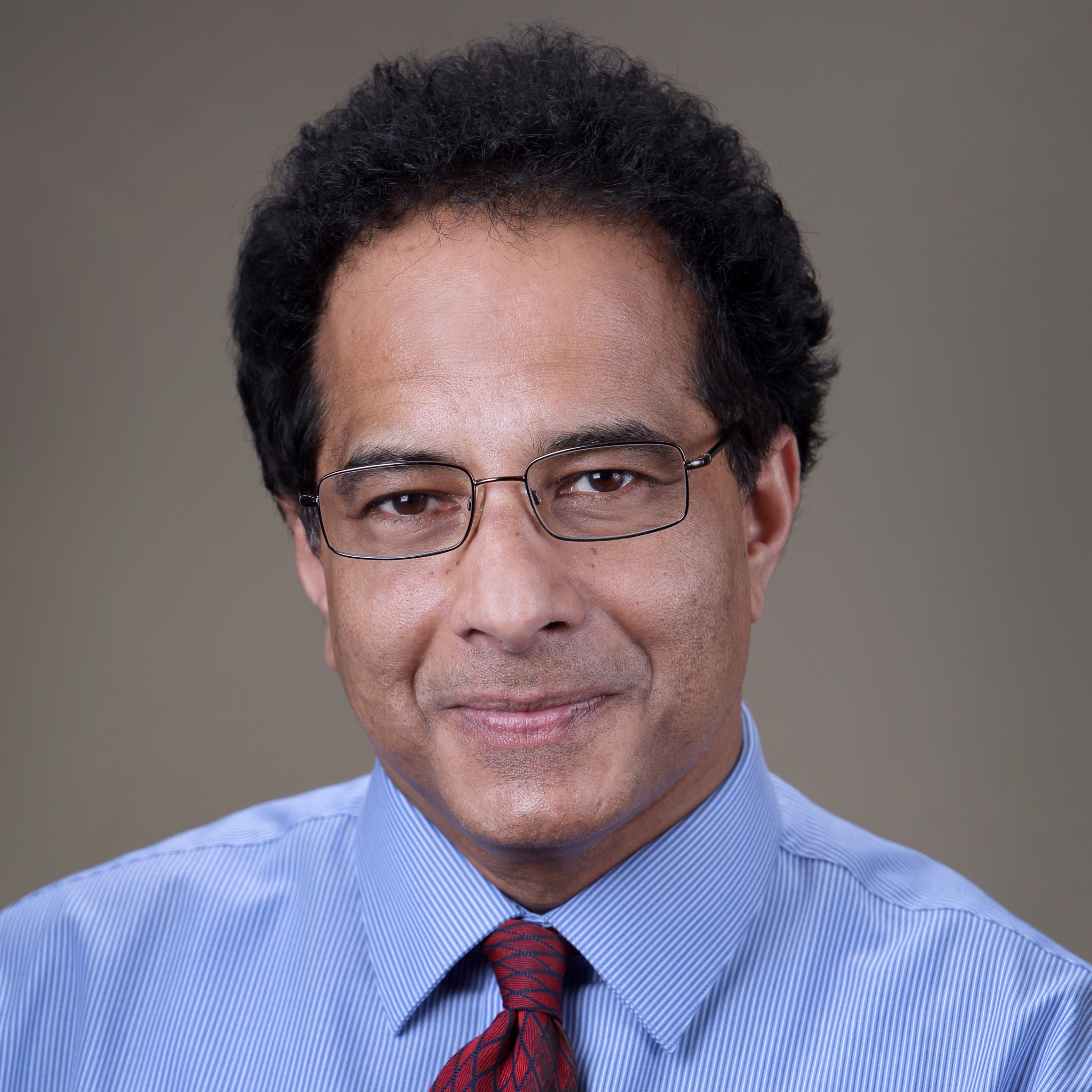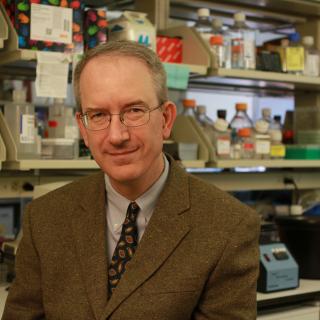
Liyanage P. Perera, Ph.D.
- Center for Cancer Research
- National Cancer Institute
- Building 10, Room 4N114
- Bethesda, MD 20814
- 240-858-3497
- pereral@mail.nih.gov
RESEARCH SUMMARY
Dr. Perera received his Ph.D. from the F. Edward Hebert School of Medicine, Uniformed Services University of the Health Sciences, Bethesda, MD in 1990 and joined the Laboratory of Clinical Investigation, NIAID in 1992 as a senior staff fellow. In 1997, he moved to the Metabolism Branch of NCI (now the Lymphoid Malignancies Branch) as a staff scientist and currently leads a translational research program. His research focuses on immunotherapeutic approaches including the generation of engineered T cells with chimeric antigen receptors (CAR) and targeted combinatorial drug regimens as therapeutic modalities for the treatment of cancer, infectious diseases, and autoimmune disorders. He is an inventor with two US patents (No. 5,747,272 and No.8,663,622), a recipient of several Federal Technology Transfer awards, and an NIH merit award.
Areas of Expertise

Liyanage P. Perera, Ph.D.
Research
1 The use of immune enhancing cytokines as molecular adjuvants in vaccines against infectious diseases and cancer: The development of effective long-lasting immunotherapy and immunoprevention for chronic infectious diseases such as malaria, tuberculosis, HCV, AIDS, and cancer represents a major challenge. Our research has focused on the approach of using immune enhancing cytokines, particularly IL-15, GM-CSF and Flt3 ligand to enhance the efficacy of several vaccine candidates. Central to our vaccine developmental efforts is the use of the live vector MVA vaccinia delivery platform in addition to LC16M8 and Wyeth vector platforms with integrated cytokines. These vaccines are capable of delivering the vaccine cargo directly into antigen presenting dendritic cells by efficient infection, concomitant with the induction of danger signals to activate Toll like receptor pathways pivotal for priming a robust effector T cell response. Using this technology we have demonstrated the enhancement of CD8 T cell-mediated immune responses as well as antibody-mediated humoral immune responses to several candidate vaccine antigens that are currently being evaluated. Several vaccinia-based vaccine candidates that are at various stages of pre-clinical development include a penta-valent HCV vaccine that expresses E1, E2, NS3, NS4, and NS5B in tandem; a multivalent HIV vaccine that expresses env, gag, pol, nef and tat; dual and single agent biodefense vaccines against smallpox and anthrax; a multivalent tuberculosis vaccine that expresses ESAT6, Ag85A, Ag85B, HSP65, and Mtb 39A; a multi-valent malaria vaccine that expresses CSP, AMA-1, MSP-1 SSP2; a multi-valent universal influenza vaccine that expresses H5, NA, M1, M2, and NP and is effective against pandemic and emerging influenza strains; EBV and HSV-2 herpes viral vaccines, a hexavalent human papilloma virus (HPV) vaccine that expresses L1, E6 ,E7 of HPV 16 and L1, E6, E7 of HPV 18; a breast cancer vaccine targeting the HER2 oncogene, triple-adjuvanted full-length MAGE-A3 that is over-expressed in a variety cancers including melanoma as an immune-therapeutic vaccine and a trivalent prostate cancer vaccine that expresses full-length Prostate Specific Antigen (PSA), Prostate Specific Membrane Antigen (PSMA), and Prostatic Acid Phosphatase (PAP) polypeptides in tandem with IL-15 as a molecular adjuvant. Details regarding this vaccine platform are available at the Office of Technology Transfer, National Institutes of Health website: http://www.ott.nih.gov/Technologies/abstractDetails.aspx?RefNo=726
2. Blockade of IL-15 and other common gamma chain cytokine signaling as a therapeutic modality in autoimmune disorders: It is increasingly becoming clear that IL-15 may play a central role in inflammatory autoimmune diseases. Recent evidence suggests that in a number of inflammatory auto-immune diseases including celiac disease, rheumatoid arthritis, and autoimmune diabetes, activated T cells destroy target parenchymal cells predominantly via a mechanism that is independent of TCR engagement, but is very much dependent upon the NKG2D-MIC pathway. IL-15 up-regulates the expression of MIC expression in the parenchymal tissues and induces the expression of the activating NKG2D receptor as well as DAP10, and phosphorylates ERK involved in the NKG2D-mediated signaling cascade in T cells, thereby perpetuating a vicious cycle of continuous tissue destruction and chronic inflammation. Blockade of TNF using TNF-specific monoclonal antibodies or soluble TNF receptor immunoglobulin fusion proteins has revolutionized the therapy of select autoimmune diseases. However, these TNF directed approaches do not provide effective therapy for all patients with autoimmune diseases and newer therapeutic targets are needed. Furthermore, although TNF directed therapy has an anti-inflammatory effect it has no impact on self reactive memory T-cells that may play a role in the pathogenesis and maintenance of autoimmune diseases. Collectively these observations suggest that blockade of IL-15 activity may be an effective therapeutic modality in the management and treatment of inflammatory auto-immune disorders.
Ongoing studies encompass autoimmune type I diabetes, psoriasis, systemic lupus erythematosus (SLE), ALPS, and autoimmune airway hypersentivity with the use of relevant preclinical small animal models of these disease entities.
Publications
Tofacitinib, a janus kinase inhibitor demonstrates efficacy in an IL-15 transgenic mouse model that recapitulates pathologic manifestations of celiac disease
The role of interleukin-15 in inflammation and immune responses to infection: implications for its therapeutic use
Malaria infections do not compromise vaccine-induced immunity against tuberculosis in mice
IL-15 adjuvanted multivalent vaccinia-based universal influenza vaccine requires CD4+ T cells for heterosubtypic protection
Protective-antigen (PA) based anthrax vaccines confer protection against inhalation anthrax by precluding the establishment of a systemic infection
Biography

Liyanage P. Perera, Ph.D.
Dr. Perera received his Ph.D. from the F. Edward Hebert School of Medicine, Uniformed Services University of the Health Sciences, Bethesda, MD in 1990 and joined the Laboratory of Clinical Investigation, NIAID in 1992 as a senior staff fellow. In 1997, he moved to the Metabolism Branch (now the Lymphoid Malignanicies Branch) of NCI as a staff scientist and currently leads a translational research program. His research focuses on immunotherapeutic approaches including the generation of engineered T cells with chimeric antigen receptors (CAR) and targeted combinatorial drug regimens as therapeutic modalities for the treatment of cancer, infectious diseases, and autoimmune disorders. He is an inventor with two US patents (No. 5,747,272 and No.8,663,622), a recipient of several Federal Technology Transfer awards, and an NIH merit award.
